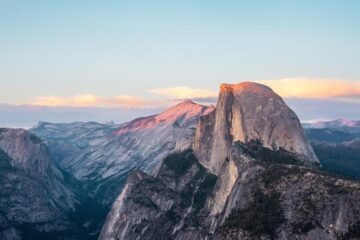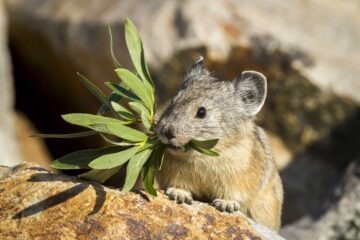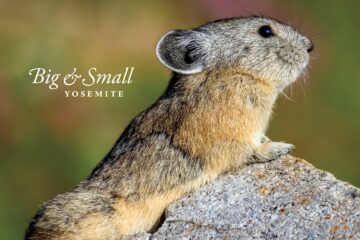Yosemite National Park is in a perpetual balancing act between protecting its natural and cultural resources and making the park accessible to all those who wish to experience its beauty and grandeur. People with various conditions, such as autism, aphasia, muscular dystrophy, hearing and vision impairments, neurodivergence, traumatic brain injuries, and posttraumatic stress disorder (PTSD), may experience the world differently. Throughout the park’s history, there have been countless leaders who have worked to make the park more accessible, welcoming, and inclusive.
In 2019, the park celebrated the 40th anniversary of its deaf services — the longest running program within the National Park System. Yosemite has also been looking for ways to increase accessibility, such as adding more accessible trails and rehabilitating old buildings to make them compliant with the Architectural Barriers Act (ABA) and the Americans with Disabilities Act (ADA).
The donor-funded United in Yosemite festival — held this past June in Yosemite Valley — celebrated diversity in climbing, and prioritized accessibility to ensure that the event was as successful and inclusive as possible.
“United in Yosemite reached out to ParaCliffHangers while planning and they devoted a real part of their budget to an accessibility consultant,” explained Elliott Nguyen, a board member of ParaCliffHangers — an organization that builds community where disability is not a barrier to climbing.
The Volunteer Visitor Information Assistants program is a crucial part of visitor services in Yosemite during peak season, providing important information and knowledge to visitors. The program has been accommodating to volunteers with disabilities, such as Cat Maness, who uses a motorized wheelchair.
“The Conservancy has been amazing in terms of accessibility,” Maness says. “I feel like I have not just been given reasonable accommodation — I feel like I have been given generous accommodation.”
Maness completed an informal survey of the park, noting the quality of trails, accommodations, and certain design oddities, such as where a cement pathway ends a foot away from trash cans.
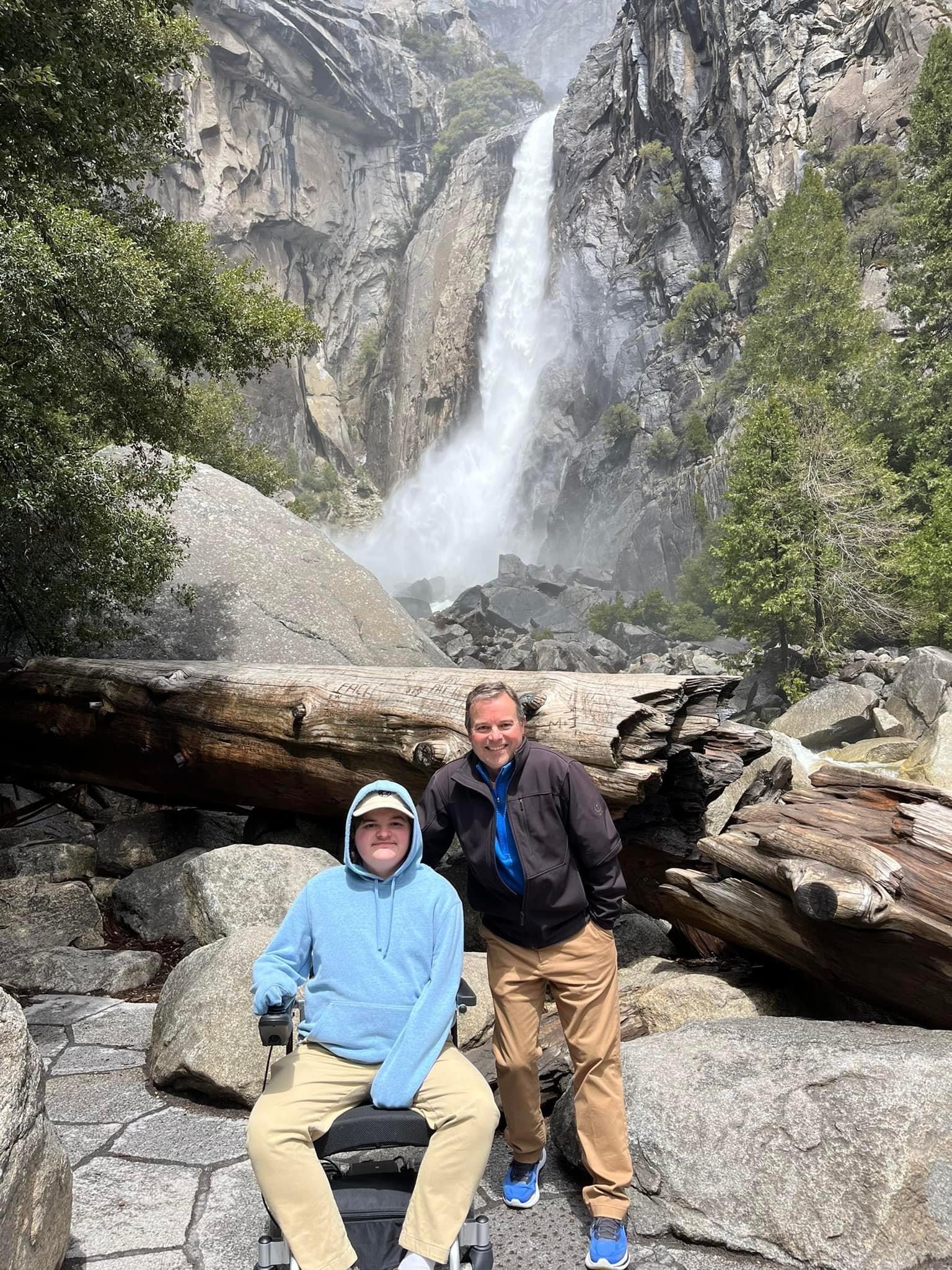
Donor John Killian and his son on their recent visit to Yosemite Valley. The Killians were impressed by the park’s accessibility efforts. Photo by John Killian.
“Let me decide what’s accessible and what’s not,” she says.
The description of a pathway’s surface (paved, packed dirt, gravel, sand, etc.), width, and the presence of barriers, such as roots and steps, allows visitors with disabilities to plan their trips more effectively and choose an appropriate experience.
Maness recently launched YosemiteAccess.com, which shares crowd-sourced observations with the hope of providing better trip-planning information for a variety of disability groups.
“My son has muscular dystrophy and uses a motorized wheelchair,” Conservancy donor John Killian says. “Yosemite is the most accessible of the six national parks we have visited.”
When checking them in at the entrance gates, rangers provided Killian and his family with an accessibility parking pass and an information packet that details accessible trails and parking areas. The number of accessible trails has grown through the generosity of donor support for large-scale rehabilitation projects at Glacier Point, Lower Yosemite Fall, and Mariposa Grove.
Two major Conservancy projects that will be completed in 2023 further advance accessibility in Yosemite. The newly finished Bridalveil Fall project includes an accessible lower viewing platform and loop trail. The bronze relief map at the Welcome Center uses Braille and different textures to show trails and roads in the landscape.
Accessibility Guides: Adapting Information for Different Needs
In 2013, Yosemite Conservancy funded the creation of a guide for people with adult-onset brain injury resulting in communication disorders known as aphasia. The guide, which simplifies language and uses bold visuals to communicate key information, was the first of its kind in the National Park Service. The treatment program was founded by Jan Avent, a Yosemite Conservancy board member and professor of communicative sciences and disorders at CSUEB.
The guide helps more groups than just people with aphasia.
“So many of the things that help one group help another group, so you’re not having to reinvent the wheel every single time,” Avent says. “There are ways to make people feel like they’re wanted, that they’re part of the park community.”
The guide is available on the Yosemite National Park website as a downloadable PDF.
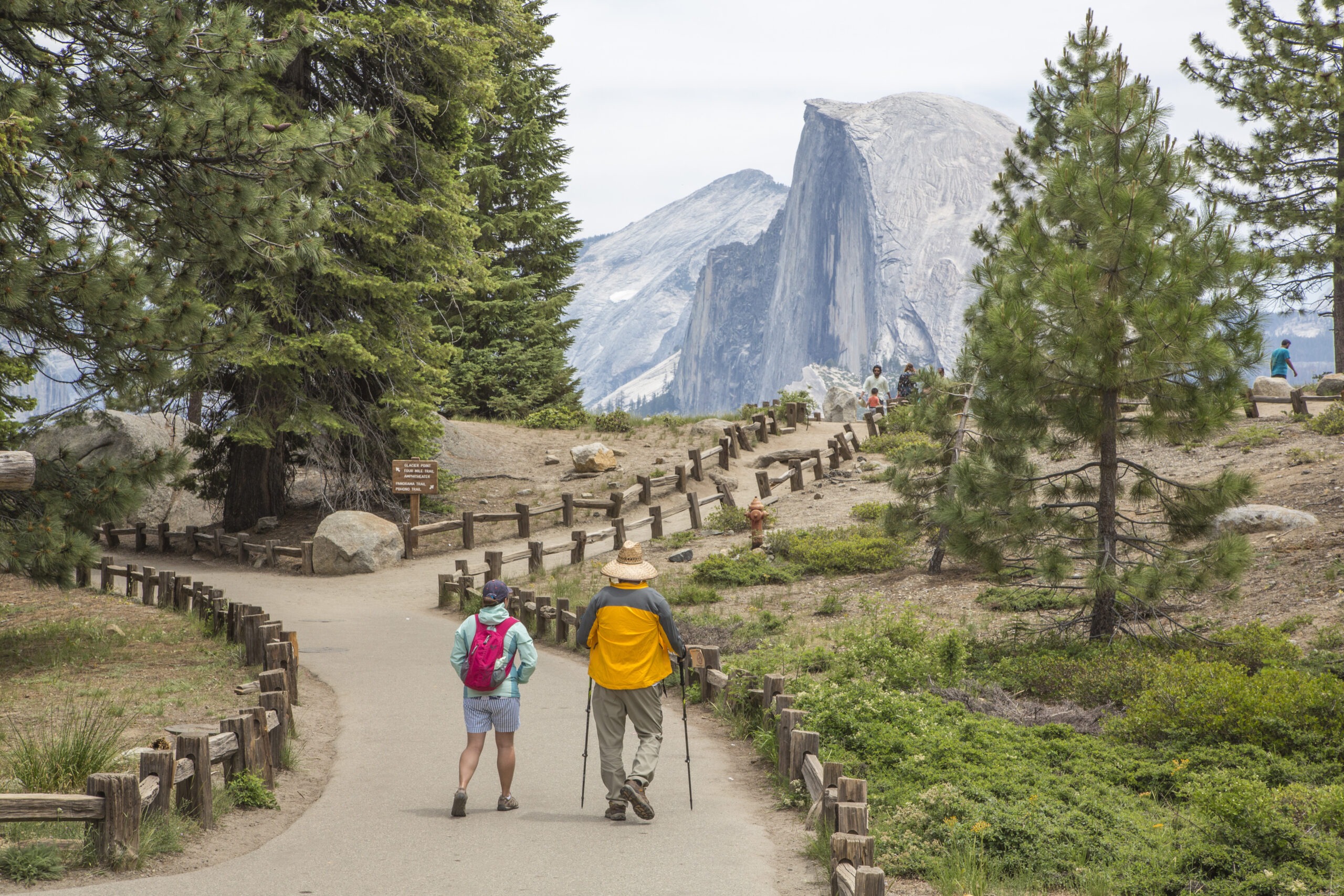
Valley trails are designed with accessibility in mind to ensure everyone can enjoy the park. Photo by Yosemite Conservancy/Josh Helling.
The Junior Ranger Adaptive Activities Guide is a groundbreaking accessibility milestone in Yosemite. Drs. Penny Hatch and Nancy Quick, research assistant professors at the Center for Literacy and Disabilities Studies at the University of North Carolina at Chapel Hill, worked to develop the guide for caregivers of Junior Rangers with communication challenges.
“The idea of these activities is you do not need to use speech to participate; there is a way for every child to respond and participate,” Hatch says. “You do not have to have the ability to hold and control a pencil, to draw a circle, make an X, or draw a line. But you fully oversee developing your own responses.”
The guide acts as a companion piece to the Yosemite Junior Ranger Handbook, providing suggestions to caregivers for how to engage Junior Rangers in Yosemite with the concepts from the handbook.
“My ultimate goal was always to develop a guideline for the National Park Service as a gift,” Hatch says. She hopes this will inspire other national parks and public lands to consider adding adaptive guides for their youth programs.

